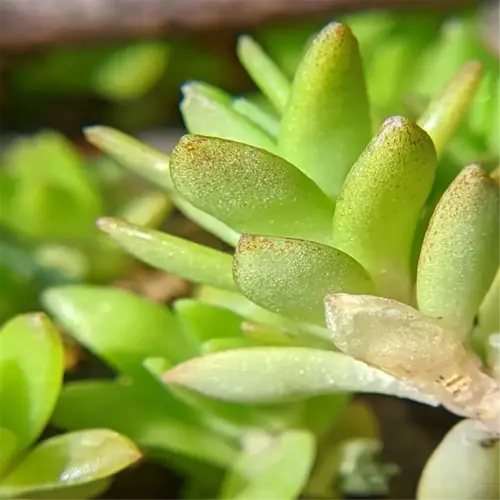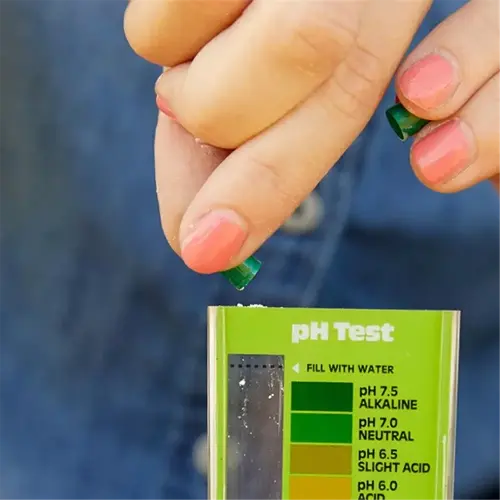Spider Mite Control: Proven Strategies for Healthy Plants

Written by
Tina Carter
Reviewed by
Prof. Martin Thorne, Ph.D.Controlling spider mites involves early detection and the use of integrated pest management (IPM) practices.
The introduction of predatory mites, as in Phytoseiulus persimilis, will decrease spider mite populations rapidly.
Neem oil sprays should be applied every 5-7 days to disrupt spider mite lifecycles.
Miticides should be revived regularly with different mode of action (MoA) codes (every 2-3 treatment cycles).
Keep humidity levels at 60-80% and select mite-resistant plant varieties for prevention.
Check plants weekly with 10x magnification to make sure infestations can be discovered early.
Article Navigation
Controlling spider mites begins when you first notice the signs. Yellow tiny dots on a leaf or some fine webbing on the bottom of a stem would be the warning that they are there. Any indication of spider mites can lead to losing a whole plant if they are not controlled. This can save you time in your gardening activity and will prevent losing plants.
Utilize the methodology known as Integrated Pest Management to take a balanced approach. This fundamentally entails mixing organic sprays (e.g., neem oil) with predatory mites that hunt for pests as a part of the ecosystem. By choosing this approach, you can avoid the need to use strong pesticides. IPM is applicable in small gardens and larger farms alike. At each scale of agriculture, sustainability is ever-present.
New to gardening? Don't worry. Just keep it simple. Each week, examine your leaves with a hand lens. If you see signs of damage, consider adding Phytoseiulus persimilis to the leaves and surrounding soil. This predatory mite will feed on your spider mites, and will not cause you any harm to your plant. Then, as an extra strategy, use a homemade garlic spray to complement this biocontrol.
Biological Control Methods
Predatory mites, such as Phytoseiulus persimilis, prefer a humidity range of 60-80%. When you release these predatory mites into your crop, aim for a release rate of one predatory mite for every ten spider mites, i.e., 1:10 release rate. A ratio of 1:10 will prevent overcrowding in this case, and allow them to search for prey without over-exploiting their food source.
Pair the released Stethorus pipes beetles with your releases of mites. These beetles will eat the eggs that you may not see located in the cracks and crevices. Don't use a sulfur spray if you see mites, it kills your beneficial allies. If the situation worsens, use some plant-safe miticides, as labeled, or plan for releasing the beetles at another time. Be sure to read the labels for compatibility with biological control targets.
Timing is important. When you are releasing your predators, the early morning or late evening is best. Expect it to be humid at this time which also keeps them active. As we discussed earlier, plants can be misted before release to raise humidity. If you skip this step, you run the risk of dehydration, and dead predators cannot help protect the garden.
Abide by integrated pest management principles. Alternate between beetles and mites. Monitor populations weekly with sticky traps and adjust ratios of mites and beetles, if necessary. Flexibility is essential to prevent resistance, along with a resilient ecosystem of beneficials around your plants.
Identifying Spider Mite Damage
Signs of spider mite damage on plants often first appear as leaf stippling, or clusters of white or yellow speckling. The stippled areas are different from damage caused by nutrient deficiencies, as they do not have brown edges. Start by checking the undersides of your plant's leaves. Knowing the early signs of spider mites lets you intervene before substantial damage is done. If not addressed, stippling can progress to bronzed leaves which will eventually lead to defoliation.
Fine plant webbing helps identify mites and distinguish them from aphids or thrips. Aphids will leave a sticky residue. Thrips will produce silvery streaks on the leaves. Mites produce silk-like threads between stems and leaves. Heavy infestations will yield plants that are coated in very thin gauzy layers of webbing. This webbing will trap dust and slow the growth of the plant.
Tomatoes, strawberries, and roses are very susceptible to high infestation levels. Houseplants such as ivy and palms usually contain mite nests. Before purchasing plants, carefully inspect them for mite damage. If infested, quarantine the entire plant. I have successfully saved my entire collection by quarantining one orchid that was infested with spider mites for three weeks.
Confirm your suspicions with a 10x magnifier. Active adult mites will look like little dots moving on the leaf's surface. When you tap the leaves over a piece of white paper, anything that is a falling speck and has motion indicates active infestations. If you discovered the infestations over 48 hours ago, take immediate action. Waiting longer leads to more egg-hatching cycles.
Leaf Stippling
- Pattern: Tiny white or yellow dots clustered near leaf veins
- Progression: Starts on lower leaves, spreads upward as infestation worsens
- Misdiagnosis Risk: Often confused with nutrient deficiencies (e.g., magnesium)
Silk Webbing
- Location: Undersides of leaves and between stems
- Texture: Fine, wispy strands (unlike dense spider webs)
- Timing: Visible in advanced infestations (>2 weeks)
Confirmation Tools
- 10x Magnifier: Look for oval mites with two dark spots
- Paper Test: Shake leaves over white paper; moving dots = mites
- Symptom Timeline: Damage appears 7-10 days after initial infestation
Leaf Discoloration Stages
- Early Stage: Yellow/white speckles with no webbing
- Mid-Stage: Bronze or reddish tint on leaf surfaces
- Late Stage: Entire leaf desiccation and drop
Root Damage Signs
- Indicator: Wilting despite adequate watering
- Cause: Severe mite stress reducing nutrient uptake
- Diagnosis: Rule out fungal/bacterial root rot first
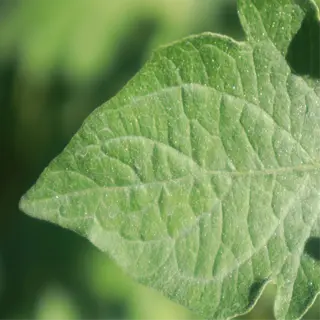
Tomatoes
- Signs: Bronze-colored leaves, defoliation starting from the base
- Prevention: Avoid overhead watering; use drip irrigation
- Treatment Threshold: Act at first stippling signs

Roses
- Signs: Curled petals, dull foliage with yellow speckles
- Prevention: Prune overcrowded canes for better airflow
- Treatment: Apply neem oil every 5-7 days
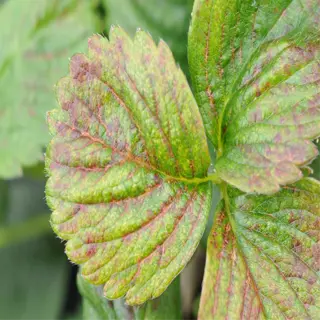
Strawberries
- Signs: Reddish-purple leaves, stunted fruit growth
- Prevention: Remove weeds within 3 ft (0.9m) of beds
- Treatment: Release Neoseiulus californicus mites
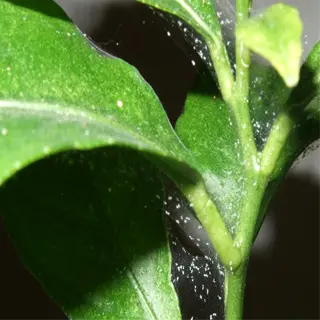
Houseplants
- Signs: Dusty appearance on leaves, leaf drop
- Prevention: Isolate new plants for 2 weeks
- Treatment: Wipe leaves with 70% isopropyl alcohol

Beans
- Signs: Silvery undersides, reduced pod formation
- Prevention: Rotate crops annually
- Treatment: Spray rosemary oil solution (5ml per liter)
Organic Solutions
Organic spider mite control works well with neem oil, an effective and multi-use miticide. A good working ratio is 2 tablespoons of neem oil per gallon of water. This ratio prevents the neem oil mix from being too strong and burning leaves but still keeps it effective. Spray every 5 days for three weeks, targeting the underside of the leaves. This consistency will disrupt the spider mite's natural lifecycle.
Using a garlic spray mass of a fourth component layer. Blend four cloves with a quart of water. Strain and mix in a teaspoon of liquid soap. You will want to spray that at dawn so the plants do not get scorched in the sunshine. The sulfur compounds repel the mites. After each rain or heavy watering, we have to reapply.
Sulfur-based products should not be mixed with oils at any time. The mixture will develop phytotoxic burns. I have witnessed tomato leaves crisp overnight from mixing the two. Treat immediately using only one or the other. Rotate the applications of neem oil with the rosemary oil sprays to ensure mites do not develop resistance. Both oils will suffocate mites but species with either oil will not cross-react.
Weekly sprays on high-risk plants will help to avoid outbreaks. Roses and strawberries are the ones that will benefit the most. Adjust for seedlings (subtract steep effects by 50% of concentration). Store mixed spray in opaque bottles. Exposure to light will degrade the five most potent active ingredients in neem. Even with organic ingredients, it does not authorize you to be careless - spraying should be precise to guarantee success.
Neem Oil Spray
- Dilution: 2% solution (20ml neem oil per 1L water)
- Additive: 5ml liquid soap as emulsifier
- Frequency: Apply every 5-7 days for 3 weeks
- Avoid: Do not use in temperatures above 90°F (32°C)
Garlic Repellent
- Recipe: Blend 4 garlic cloves with 1L water, strain
- Additive: 10ml mineral oil for adhesion
- Target: Repels mites but doesn't kill eggs
- Limitation: Reapply after rain or watering
Rosemary Oil Solution
- Dilution: 5ml rosemary oil per 1L water
- Effectiveness: Disrupts mite feeding within 48 hours
- Caution: Test on one leaf first for sensitivity
- Storage: Use within 48 hours of mixing
Diatomaceous Earth
- Application: Dust dry powder on leaf undersides
- Limitation: Ineffective when wet
- Safety: Use food-grade DE; wear a mask during application
- Reapply: After rainfall or irrigation
Cinnamon Oil Spray
- Dilution: 3ml cinnamon oil per 1L water
- Effectiveness: Kills mites and eggs on contact
- Additive: 1 tsp dish soap for better adhesion
- Caution: Avoid during flowering to protect pollinators
Managing Resistant Spider Mites
To manage resistant mites, rotate miticides such as abamectin and hexythiazox. These two boxes represent distinct chemical classes (Group 6 and Group 10A). Switching miticides every two cycles will limit their adaptation to all chemicals. Mites can survive similar miticides if applied once in the same cropping season. In creating your rotation, you will disrupt the evolutionary momentum of the resistant mites. Always include reading the label to check for the mode-of-action codes.
Enhance efficacy through the application of neem oil into insecticidal soap. The soap dissolves away the exoskeletons of the mite. Neem oil disrupts the insect's hormones. Combine 1 tablespoon of neem oil with 2 teaspoons of soap per quart of water and spray on affected plants at dusk to avoid leaf burn. Reapply every 5 days.
Amblyseius swirskii Predatory mites require a minimum humidity of 60-80% to prosper; dry air can kill them in just a few hours (Flesch, 2020). Be sure to mist your plants before adding them to your ecosystem, targeting hotspots, under leaves, and in/near buds. They eat 5-10 mites a day, which may vary due to humidity levels. The ideal scenario would be pairing with humidity monitors for accuracy.
Monitor for miticide resistance through weekly evaluation of treated areas. If you see populations rebound within a week, change your approach. You can add lacewings or minute pirate bugs as a backup. Always log your treatments. These patterns will tell you what is susceptible. Adapt or lose to dynamic situations involving pests.
Chemical Rotation
- Rule: Rotate miticides with different Mode of Action (MoA) codes
- Example Rotation: Abamectin (MoA 6) → Hexythiazox (MoA 10A)
- Interval: Minimum 2-3 treatment cycles between reusing same MoA
Synergistic Combinations
- Neem + Soap: Mix 2% neem oil with 15ml insecticidal soap per liter
- Effect: Disrupts mite feeding and dissolves protective wax layers
- Caution: Avoid combining with sulfur-based products
Predatory Mite Releases
- Species: Amblyseius swirskii (tolerates 70-90°F/21-32°C)
- Release Rate: 500-1,000 mites per 100 sq ft
- Timing: Introduce before mite populations exceed 5 per leaf
Cultural Interventions
- Pruning: Remove 20% of infested foliage weekly
- Hydration: Mist plants daily to maintain >60% humidity
- Quarantine: Isolate new plants for 14 days
Resistance Monitoring
- Threshold: Treat if populations rebound within 7 days
- Testing: Use diagnostic doses (e.g., 50% label rate) to confirm resistance
- Documentation: Track MoA usage history for each crop zone
Preventing Spider Mite Outbreaks
Prevention of spider mites* first takes the form of yellow sticky traps set around the bases of plants. These traps will catch wandering spider mites before they begin to colonize and establish on the leaves. Second, you should also purchase a 10x magnifier and inspect leaves weekly. If you see early signs of spider mite damage, such as light stippling, you should act quickly. If you delay, spider mite populations will grow exponentially.
Keep humidity control range at 60-80% to avoid mites. The dry air is perfect for them. A simple hygrometer will help. You can group plants or use a humidifier. I have saved whole basil crops by lightly misting them every morning during heatwaves.
Opt for marigolds, chrysanthemums, or garlic chives. They create compounds that mites avoid. Plant these bed neighbors next to your susceptible species, such as roses or tomatoes. After surrounding my greenhouse with French marigolds three seasons ago, we have not seen any mites.
Establish an effective plant quarantine for all new arrivals. Quarantine (Isolate) them for 2 weeks in a different room. Check on them daily using a flashlight. Throw away soil, or vegetation that is infested with pests (don't take the chance). Clean tools with 70% alcohol after every use. An ounce of prevention is worth a pound of cure.
Environmental Controls
- Humidity: Maintain 60-80% humidity with misters or humidifiers
- Temperature: Avoid sustained heat above 85°F (29°C)
- Airflow: Use fans to reduce stagnant air in greenhouses
Plant Selection
- Resistant Varieties: Marigolds, chrysanthemums, garlic
- Trap Crops: Plant zinnias away from main crops to attract mites
- Companion Planting: Basil repels mites near tomatoes
Monitoring Protocols
- Sticky Traps: Place yellow cards near plant bases
- Magnification: Weekly 10x lens checks on leaf undersides
- Threshold: Treat if >5 mites per leaf are found
Quarantine Practices
- New Plants: Isolate for 14 days before introducing
- Tools: Disinfect pruners with 70% alcohol between plants
- Soil: Solarize contaminated soil at 160°F (71°C) for 30 minutes
Cultural Maintenance
- Pruning: Remove overcrowded foliage weekly
- Debris: Clear fallen leaves within 3 ft (0.9m) of plants
- Watering: Avoid overhead irrigation after midday
5 Common Myths
Spider mites only attack unhealthy or nutrient deficient plants.
Spider mites don't distinguish between healthy plants and those under stress. Although drought or nutrient deficiencies can make a plant more susceptible to outbreaks, spider mites can be found thriving among plants that are exhibiting vigorous growth. Inspection of all plants, regardless of their health, is necessary in order to identify pest problems early and implement control.
Chemical pesticides are the fastest solution for spider mite eradication.
Biological controls like Phytoseiulus persimilis predatory mites can reduce populations within 48 hours, faster than many chemicals. Chemicals also risk harming beneficial insects and accelerating mite resistance, making integrated approaches more sustainable and effective long-term.
Indoor plants are not immune to spider mite pests.
Indoor environments, especially artificially heated homes or drier offices, provide perfect indoor habitats for Spider Mites. Mites can survive on houseplant hosts, such as ivy and palms all year long. Always isolate new houseplants, and maintain indoor humidity levels above 60% as much as possible indoors.
All spider mite species make visible silk webbing.
Carmine spider mites (Tetranychus cinnabarinus) seldom produce webs, which makes an infestation more difficult to find. You will need to look for stippling or discoloration of the leaves. If the webs are missing, use a 10x magnifier to confirm the mites presence.
Miticides are effective at killing every life stage of spider mite.
Most miticides target adult mites and nymphs but not the eggs. To manage spider mites effectively, treatments should be applied every 5-7 days to target the spider mite lifecycle. Efficacy will depend on overlapping miticides with ovicides like neem oil.
Conclusion
For successful spider mite control, you must combine biological control measures with cultural practices. Deploy Amblyseius swirskii mite predators to attack pests. Be sure to cut back infested leaves quickly. These mitigation practices will help create adverse conditions for mites as well as improve plant tolerance. Achieving balance is key to long-term results.
Utilizing integrated pest management strategies decreases dependence on chemicals. Alternate the use of sticky traps with sprays of neem oil, and then releases of predatory insects- which are harmless to pollinators. This method not only protects pollinators but also helps to maintain the soil health that you would like to keep. Over the years, my garden's ecosystem became stable. The pest outbreaks now take care of themselves much faster with fewer inputs.
Be on the lookout for mites after treatment. You will want to examine your plants weekly at 10X, for they will hatch in a few days and will put early nymphs at risk. The moment you forget to check for even one week you will have restarted the entire life cycle of the mites. I make it a habit to check on my plants on Thursday mornings. Consistency means no surprises, and complacency is a waste of time and resources.
Sustainable gardening is focused on prevention. Plant chrysanthemums next to your tomatoes. Always quarantine any new arrivals for at least 14 days. Encourage your neighbors to adopt these practices. Wind and clothing transfer mites. When everyone works together, the area can establish a resistance. The good health of your garden spreads to other gardens in the region. Start with small actions but think in big terms about prevention.
External Sources
Frequently Asked Questions
What natural substances repel spider mites effectively?
Spider mites hate neem oil, garlic extract, and rosemary oil. These substances disrupt their feeding and reproduction. For best results, mix 2% neem oil with water and spray every 5-7 days, targeting leaf undersides.
How can I prevent spider mite infestations indoors?
Maintain humidity above 60%, isolate new plants for 14 days, and inspect leaves weekly with a magnifier. Quarantine infested plants immediately and avoid overcrowding foliage to reduce mite-friendly environments.
What predatory insects control spider mites?
Three natural enemies are highly effective:
- Phytoseiulus persimilis (specialized mite predator)
- Stethorus picipes (lady beetle targeting mites)
- Green lacewings (larvae consume mites and eggs)
Is dish soap safe for spider mite control?
Yes, but dilute 1 teaspoon of mild dish soap in 1 liter of water. Test on a single leaf first. Overuse can damage plants, limit applications to once weekly and rinse after 2 hours.
Why do spider mites keep returning?
Reinfestations occur due to incomplete lifecycle disruption, untreated neighboring plants, or low humidity. Eggs survive most treatments, so combine miticides with predatory mites and repeat sprays every 5 days for 3 weeks.
How frequently should neem oil be applied?
Apply neem oil every 5-7 days for 3 consecutive weeks. This interrupts the mite lifecycle by targeting newly hatched nymphs. Avoid spraying in direct sunlight or temperatures above 90°F (32°C).
Does vinegar eliminate spider mites?
Vinegar is ineffective against mites and risks burning leaves. Instead, use insecticidal soap or rosemary oil sprays. For severe infestations, release predatory mites for faster, plant-safe control.
What plants attract spider mites?
Mites favor tomatoes, roses, strawberries, and houseplants like ivy. Plant garlic or chrysanthemums nearby as repellents. Avoid over-fertilizing with nitrogen, which promotes tender foliage mites prefer.
How do I sanitize tools after mite exposure?
Disinfect pruners and pots with 70% isopropyl alcohol. Soak tools for 5 minutes, then rinse. For soil, solarize it at 160°F (71°C) for 30 minutes to kill eggs and adults.
Can spider mites survive on humans?
No, spider mites feed only on plants. They may briefly cling to skin but die within hours. Wash with soapy water if exposed, and launder clothing to prevent accidental plant transfer.
